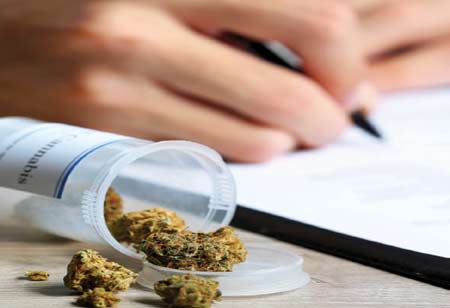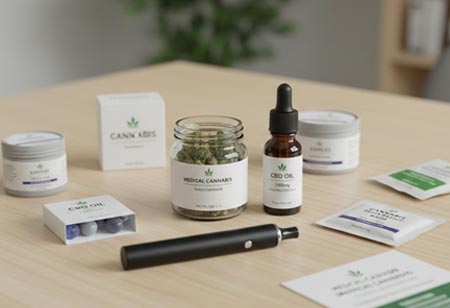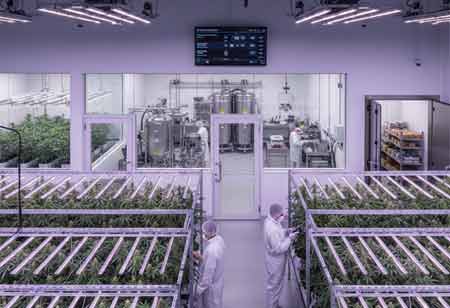Thank you for Subscribing to Cannabis Business Insights Weekly Brief
How Medicinal Cannabis is Reshaping APAC Healthcare

By
Cannabis Business Insights | Wednesday, April 30, 2025
Stay ahead of the industry with exclusive feature stories on the top companies, expert insights and the latest news delivered straight to your inbox. Subscribe today.
Over the past decade, the global discourse surrounding medicinal cannabis has undergone a significant transformation. Once considered a marginal topic in medical discussions, cannabis-derived therapeutics is now increasingly acknowledged for their potential in addressing a variety of health conditions. Within this broader global shift, the Asia-Pacific (APAC) region is rapidly emerging as an evolving center for the medicinal cannabis industry. Despite the challenges posed by diverse cultural perceptions and regulatory complexities, the sector is experiencing notable growth, innovation, and promise.
Evolving Regulatory Frameworks
The region presents a highly diverse regulatory landscape for medicinal cannabis, contrasting with the more harmonized and progressive frameworks observed in North America and parts of Europe. Progress toward legalization and the implementation of medical cannabis programs varies considerably across countries. Several nations have taken early steps by establishing legal frameworks that permit medical cannabis use under strict conditions and regulatory oversight. These jurisdictions often prioritize indications supported by preliminary clinical evidence, such as severe epilepsy, multiple sclerosis, chronic pain, and chemotherapy-induced nausea.
Regulatory authorities have developed systems in these pioneering markets to govern cultivation, manufacturing, prescription, and distribution. Key regulatory priorities include rigorous quality control, the establishment of patient registries, and the designation of authorized healthcare providers to prescribe cannabinoid-based therapies. Some countries support domestic cultivation and manufacturing, spurring the development of local industries. Others initially depend on imports from established global producers that meet international quality benchmarks such as Good Manufacturing Practice (GMP) standards.
Conversely, many APAC countries continue to enforce strict prohibitions or are only beginning to evaluate potential policy reforms. Nonetheless, even in more conservative markets across the region, there is a discernible shift toward greater scientific inquiry, policy dialogue, and incremental regulatory openness. This trend is fueled by growing global evidence, advocacy from patient communities, and the influence of international regulatory models. While progress remains uneven, the direction of travel suggests a gradual and sustained expansion in access and market maturity.
Market Access and Growing Awareness across the Region
The medicinal cannabis market across the region is undergoing a gradual yet meaningful transformation, as incremental legal access, though often limited, is opening new pathways for patients previously excluded from cannabinoid-based therapies. This shift is accompanied by a growing awareness among both healthcare professionals and the public regarding the therapeutic potential of key cannabinoids such as cannabidiol (CBD) and tetrahydrocannabinol (THC).
One of the primary drivers of demand is the region’s aging population, many of whom are managing chronic conditions such as arthritis, neuropathic pain, and other long-term ailments. Conventional treatments often fall short for these patients due to limited efficacy or undesirable side effects. In this context, medicinal cannabis is increasingly viewed as a viable plant-based alternative, aligned with broader global wellness trends that favor natural, botanical therapies supported by emerging clinical evidence.
Product preferences in APAC largely reflect global trends while adapting to local market needs and regulatory constraints. Oils and tinctures are popular due to their ease of administration and precise dosing. Capsules provide a discreet and convenient format, while, in select regulated markets, vape products and pharmaceutical-grade cannabis flower are available under strict controls. Product innovation is leaning toward condition-specific formulations, focusing on consistent cannabinoid profiles and targeted therapeutic outcomes. Balanced THC/CBD or CBD-dominant products are particularly appealing to patients seeking therapeutic benefits without significant psychoactive effects.
Maintaining rigorous quality standards is paramount as the market evolves. Good Manufacturing Practice (GMP) certification is becoming the industry benchmark for ensuring pharmaceutical-grade production. Quality assurance extends across the supply chain—from adherence to Good Agricultural and Collection Practices (GACP) during cultivation to robust extraction, formulation, and testing protocols. Accredited laboratories capable of performing potency testing, cannabinoid profiling, and contaminant screening for pesticides, heavy metals, and microbial presence are essential. This uncompromising focus on quality is instrumental in building trust among regulators, healthcare providers, and patients, ultimately supporting the long-term credibility and growth of the medicinal cannabis sector in APAC.
Building a Sustainable and Scalable Medicinal Cannabis Ecosystem in APAC
Companies must navigate complex international regulatory frameworks and logistical challenges in markets reliant on imports. In jurisdictions where domestic cultivation is permitted, secure transportation between cultivation sites, manufacturing facilities, distributors, and dispensing points becomes essential to maintaining product integrity and compliance.
Track-and-trace systems are increasingly being implemented to support this infrastructure to ensure accountability, prevent diversion, and enable seed-to-sale transparency. Distribution typically occurs through licensed pharmacies or specialized clinics, requiring prescriptions from authorized medical professionals. In some regions, emerging online pharmacy models expand patient access, particularly in remote or underserved areas, by offering more convenient and scalable distribution channels.
Parallel to infrastructure development, research and development (R&D) is playing a pivotal role in advancing the credibility and therapeutic potential of medicinal cannabis. Collaborative efforts among industry stakeholders, academic institutions, and government bodies are driving clinical trials and scientific inquiry. These initiatives are focused on evaluating the efficacy of cannabinoid-based treatments for conditions such as chronic pain, neurological disorders (e.g., epilepsy, Parkinson’s disease, multiple sclerosis), mental health conditions (e.g., anxiety, PTSD), cancer-related symptoms, and inflammatory diseases. Simultaneously, innovation in cultivation practices targets the production of tailored cannabinoid and terpene profiles, while pharmaceutical advancements are introducing novel delivery formats—such as sprays, patches, and enhanced oral formulations—to improve patient outcomes. There is also growing interest in the therapeutic potential of lesser-known cannabinoids beyond THC and CBD.
This environment attracts increasing investment from private equity firms, venture capitalists, and publicly listed entities. The sector’s rapid growth, fueled by regulatory liberalization and expanding patient access, creates diverse opportunities for capital deployment. Strategic partnerships, mergers, and acquisitions are becoming more prevalent as companies aim to scale operations, bolster supply chains, and consolidate R&D capabilities. The economic impact extends beyond product sales, including ancillary services such as laboratory testing, cultivation technologies, compliance consulting, and supply chain security.
Ultimately, the industry’s success hinges on safe, informed, and equitable patient access. Education for healthcare professionals is a priority, ensuring they are equipped to evaluate patient suitability, manage cannabinoid-based therapies, and navigate an evolving therapeutic landscape. Concurrently, patient education programs aim to demystify medicinal cannabis, clarify its benefits and limitations, and promote responsible use under medical supervision.
The APAC region is well-positioned to address rising domestic demand and emerge as a competitive player in the global cannabis value chain. The pace and nature of regulatory evolution, coupled with the continued accumulation of clinical evidence, will be decisive in shaping the region’s role in the international medicinal cannabis landscape.






